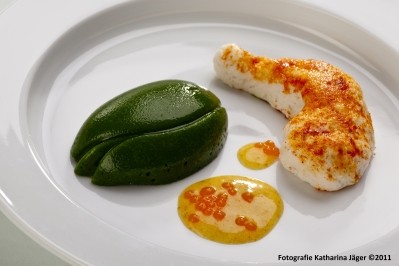Looking to the future: Creating novel foods using 3D printing
Earlier this year Kjeld van Bommel of TNO Research shared news with FoodNavigator on the organisations innovations in microencapsulation .
We caught up with him again to find out more TNO’s work with new technologies for the future of food production - and 3D printing for foods is what stands out…
Food printer
TNO has developed a 3D food printer based on traditional rapid manufacturing and prototyping techniques,which build up 3D objects using a layer by layer assembly technique.
“Traditionally this has been used to prototype designs in all sorts of industries, because you can relatively quickly build up a 3D structure of whatever you want, layer by layer, so you can then test the product to see if it looks, and feels right,” said van Bommel.
“We started to use this sort of technique with foods. Saying, OK, instead of using nylon or metals to produce an object, can we use other kinds of materials to apply this to foods?”
“One of the techniques we first started to use was a laser sintering technique. This involves using layers of powder, which then using a laser can be shaped and fused together to build up a solid 3D object.
“We’ve done this for a number of food materials, including sugars – which work well, as they fuse together. Also we have used NesQuik powder, which because it is a mixture of sugars and fats are able to melt, and then solidify again,” added van Bommel.
Using this technique, TNO has already been able to produce chain links, and company badges, made from the drinking chocolate powder.
But he believes there is a lot more potential:
“3D printing is an option which could be used to combine multiple materials, for example fat, chocolate, gelatine into a structure. It would be feasible to do.”
Foods for the future
Van Bommel said that the current technology could be used to create certain niche market products already, but added that as the technology develops, whole food products could be a possibility.
“In theory it is possible to create an entire multi-structure, three dimensional, multi-ingredient food products using this sort of technology,” he said.
He said that similarly to a normal inkjet printer – with a printer cartridge for the red, blue and yellow – a food printer could use cartridges for fat, carbohydrate, protein. He said that by adding some water, plus some flavours or colours, “you could make any kind of product.”
Meat-replacement potential
Van Bommel said that the idea of being able to create whole novel foods from scratch holds a lot of potential for vegetarian and vegan markets.
“Algae proteins or other alternative food sources can be extracted already, but often you just then have a jar of algae protein powder, which is added to an existing food. That’s not as appetising as, say, a steak. But, if you could convert that algae into something that looks more interesting to eat, and perhaps has better bite and structure then I think that is a very promising idea,” he said.
“Algae protein could be aligned to create a meat replacement product that has a more interesting structure and formulation than some of the products that are currently available.”
He added that it may also be possible to create products to help feed the growing world population.
“With a growing global population we need to find new ways to produce high protein based products using alternative food sources. With these technologies you can create different products, not to replace traditional foods, but to create new ones. It could be a very important application for this sort of technology,” said van Bommel.
A matter of time
In terms of time and efficiency, van Bommel said that the new technologies are already quite fast and could be used on an industrial scale if needed.
“An object of 1cm will take around an hour to make. But in that hour you can make more than one object by placing them next to each other, so that way you could make, for example, 600 in one hour. This means the average time per object is around 6 seconds – which is more acceptable for industry,” he said.

























